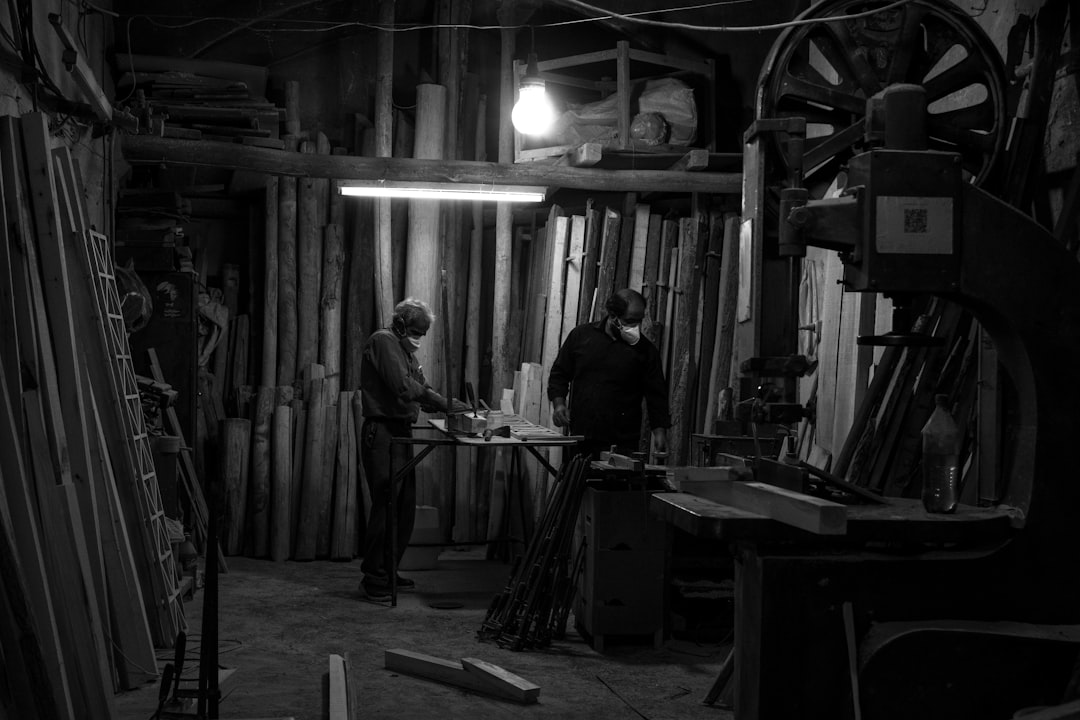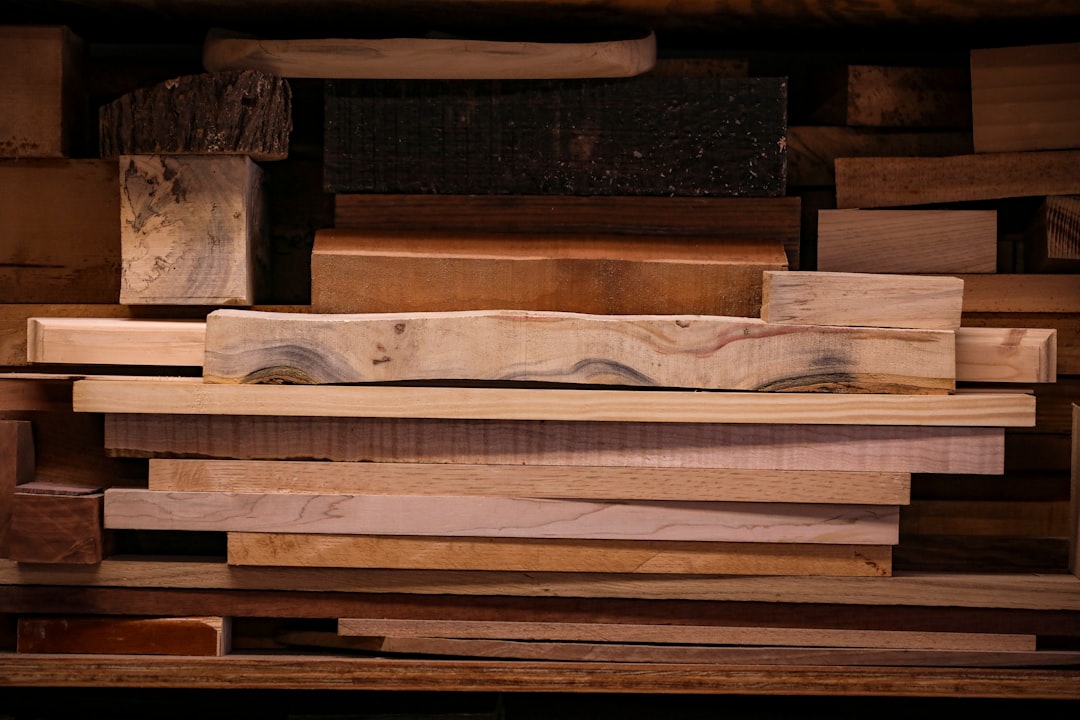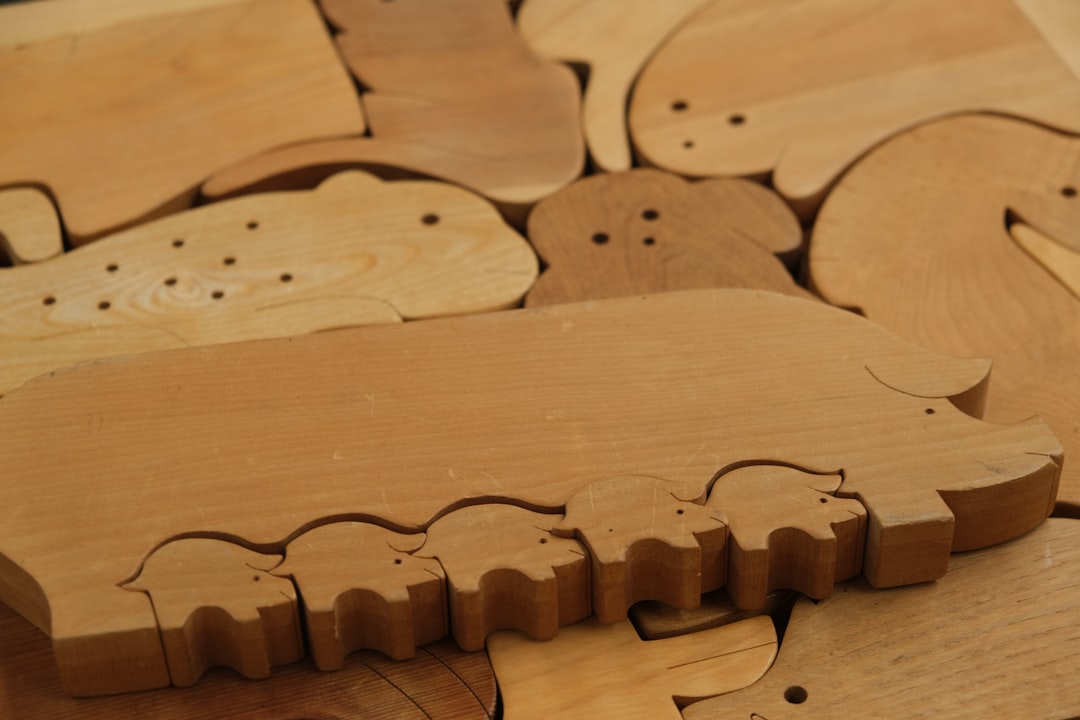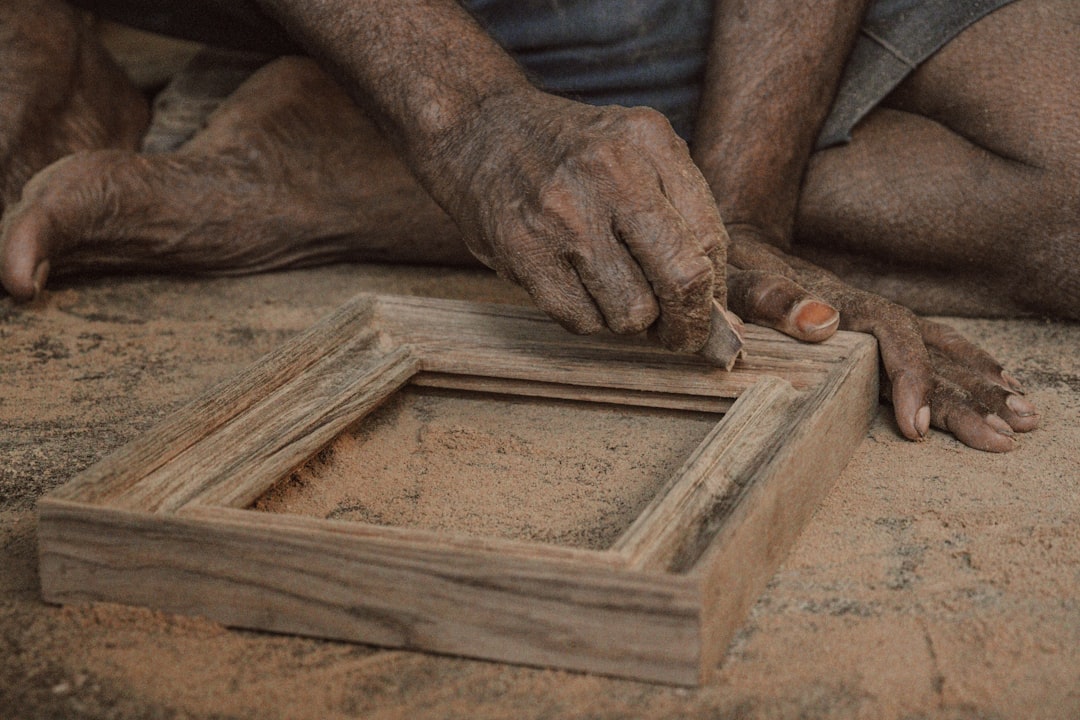

Engage prospects with a scan and streamline customer engagement with FREE QR code marketing tools by Sona – no strings attached!
Create a Free QR CodeFree consultation

No commitment

Engage prospects with a scan and streamline customer engagement with FREE QR code marketing tools by Sona – no strings attached!
Create a Free QR CodeFree consultation

No commitment
Custom furniture builders face a unique challenge in today's market: turning offline customer curiosity and showroom visits into trackable, qualified leads. While beautifully crafted pieces and personalized service draw people in, capturing contact information and nurturing those initial interactions often remains a manual and sometimes missed step. Brochures go unread, showroom sign-in sheets are forgotten, and potential clients drift away before ever reaching your sales pipeline.
Modern growth strategies highlight that missed connections are not just a lost sale; they can mean that high-value prospects never even enter your CRM or marketing pipeline. This lack of visibility into early-stage interest makes it harder to prioritize follow-ups, assign sales resources, or even understand which marketing activities spark real revenue.
In a digital-first world, QR codes in marketing make it easy for custom furniture makers to bridge the gap between in-person engagement and actionable online follow-up. By instantly connecting prospects to portfolio galleries, design consultations, or exclusive offers, QR codes can drive high-intent leads from every physical touchpoint without slowing down the customer experience. This approach not only streamlines lead capture but also ensures that qualified prospects are tracked and properly nurtured, even when initial curiosity happens offline.

Custom furniture businesses often struggle with incomplete lead records. Manual sign-up sheets and physical collateral are easy to misplace or ignore, leaving interested prospects untracked. QR codes transform how custom furniture builders connect physical experiences with online journeys. A single scan can convert interest from showroom foot traffic, expo visitors, or readers of brochures into measurable digital signals that feed your CRM and marketing automation tools.
Replacing analog workflows with QR-powered journeys creates clarity and speed. Instead of relying on a salesperson to capture details during a busy weekend or hoping a visitor remembers your website later, you can meet customers where they are and guide them to what they want in the moment. The result is a measurable pipeline that begins at the first touch: in the aisle, at the booth, or inside the catalog.
When every scan signals a new lead, advanced platforms can sync these contacts directly to your lead management or advertising workflow. This eliminates the gaps that let potential buyers remain unknown and unpursued, while giving your team a bird’s-eye view of which surfaces, events, or messages are driving the most qualified demand.

For custom furniture builders, the lack of a seamless bridge between physical interest and digital engagement often means valuable prospects remain anonymous and unconverted. Shoppers browsing a showroom, reading print ads, or admiring unique pieces at expos may hesitate to fill out forms or initiate a conversation with a rep. Without a fast, low-friction way to capture intent, sales teams are blind to actual demand and marketing cannot optimize to what works.
QR codes resolve this gap by moving people from curiosity to action in seconds. Scanning a code on a product tag or flier can open a short form, consultation calendar, or a material guide that collects preferences. Better yet, those scans can be tracked, segmented, and routed to the right follow-up sequence so warm interest becomes a booked conversation or a request for proposal.
By combining instant access with measurable outcomes, QR codes become a core part of a growth strategy focused on personalization, speed, and data-backed decisions, as seen in furniture trade insights.
Custom furniture firms benefit most from QR code formats that move a prospect from admiration to action while collecting valuable context. The format you choose should match the intent and environment of the scan, whether that is in a busy showroom, at a trade show, or at home with a catalog.
Web links and forms are the workhorses for lead capture and education. They direct visitors to visual galleries, room planning tools, and brief forms that log preferences and contact details. vCards and SMS or email triggers can complement these journeys by making it simple to save a designer’s info or send a prefilled message without friction. Dynamic QR codes connect the dots, allowing content updates and detailed analytics long after printing.
Dynamic QR solutions support all of these formats in one place, track scan behavior over time, and route data to your CRM. For custom furniture builders, dynamic codes are usually the default choice because they support seasonality, evolving inventory, and ongoing optimization.

In the custom furniture sector, growth is often limited by blind spots. Without robust attribution, it is difficult to know which touchpoints sparked genuine buyer interest or which messages accelerated a decision. Strategic QR placement addresses this pain point by making every high-traffic, high-intent moment measurable and actionable.
Look for points in the journey where people naturally pause, admire, compare, or consider. Those are prime moments to offer value in exchange for a scan. From showroom vignettes to post-purchase packaging, each surface can become a gateway to deeper engagement, richer data, and faster conversion.
By mapping QR deployments to these physical touchpoints, custom furniture firms can reduce missed segmentation and lost journey data, creating a clearer path from discovery to decision.

Custom furniture buyers often move from inspiration to decision over several visits and materials comparisons. The right QR use cases accelerate that progression while capturing data that informs personalized follow-up. Start with a few high-impact scenarios that match your core interactions, then expand as you see what works.
Each of the examples below replaces silence with engagement. They build a stronger account profile for every interested party and create a consistent onramp into your CRM and marketing flows.
Each QR code scan is a signal: it tells you what someone is interested in, where they scanned, and how ready they are to act. By deploying multiple codes across touchpoints, you can automatically segment your audience and use that data to fuel precise intent-driven retargeting and follow-up campaigns.
The key is to align codes with journey stages and content types. Awareness codes drive to inspirational galleries and design stories. Consideration codes lead to material guides, configuration tools, or price estimators. Conversion codes launch consultation booking, sample requests, or financing information. With proper tagging and integrations, every scan enriches the customer profile and triggers the next best action.
With Sona QR, each code becomes a smart entry point to your funnel. You capture real behavior and context, which means your retargeting is guided by what people actually do rather than by assumptions.
QR codes do more than shorten links. They unify offline and online efforts, turning every brochure, sign, or package into a measurable digital touchpoint. For custom furniture builders, this means no more dead ends in the buyer journey and fewer missed chances to capture interest.
When you connect QR scans with your website analytics, email platform, and CRM, you gain a continuous view of engagement. You can see which media perform, which messages resonate, and where to invest next. This unified approach helps you convert inspiration into booked consultations and quotes with less friction and more accountability.
With a centralized platform like Sona QR, you can manage codes across channels, monitor performance in one dashboard, and sync scan data with your CRM and ad platforms for automated follow-up.
A repeatable execution plan will help you move from experiments to a consistent pipeline engine. The steps below ensure your QR deployments are aligned to business goals, designed for real-world use, and instrumented for learning and scale.
Before launching, define what a successful scan looks like and what should happen next. This might be an email capture, a booked consultation, or a generated estimate. Then, ensure your destination experience is simple, mobile-friendly, and clear about the next step.
Pick one or two high-impact scenarios aligned to immediate goals. For example, Book a design consultation from showroom signage or Request a cost comparison for small-space modular storage via brochure.
The type of code determines your flexibility and measurement.
Design influences trust and scannability. Testing prevents costly misprints or poor user experiences.
Start where foot traffic and intent overlap, then scale to more surfaces as you learn.
Measurement is the feedback loop that turns QR campaigns into a growth engine.
This systematic approach ensures every QR code campaign is designed for measurable return and scalable improvement.
Many custom furniture makers struggle to connect offline engagement with closed-won revenue. Counting showroom visits or collecting anecdotal feedback is not enough to justify budgets or prioritize sales resources. Advanced QR analytics change this by making every scan a data point that can be unified with web behavior, email engagement, and CRM activity.
Instead of stopping at the scan, connect the dots across the buyer journey. When a showroom code leads to a design guide download, then to a booked consultation, and finally to a proposal, you can attribute pipeline and revenue to the original placement using offline attribution. This visibility helps focus investment on the placements and messages that move the needle.
The result is a performance marketing loop that starts in the physical world and ends with clear revenue impact. Marketing can prove value, sales can prioritize effectively, and leadership can invest with confidence.
It is easy to place a QR code. It is harder to build a repeatable system that consistently grows your pipeline. The following tips focus on clarity, measurability, and customer experience so that scanning becomes a natural part of shopping and buying custom furniture.
Prioritize educating your staff and customers on why scanning helps them. When associates reinforce the value of a scan and the destination experience delivers on that promise, you will see higher engagement and better conversion metrics.
Creative deployment examples include putting a QR code on installation checklists that links to a care-and-maintenance video series, or using a QR on invoices that invites buyers to schedule a follow-up styling session. These touches extend the relationship and create new moments for referrals and repeat business.

Many custom furniture teams have used QR codes to connect the magic of craftsmanship with digital convenience. While results vary by market and execution, the patterns are instructive: clear calls to action, strong value at the destination, and fast follow-up consistently deliver better outcomes.
Practical creativity matters. When the placement aligns with a genuine customer question or need, scans feel natural and helpful rather than gimmicky. Consider how the following examples turn common moments into measurable opportunities.
If you want to push further, consider pairing QR codes with AR previews so clients can visualize a piece in their space. Use the scan to switch between finishes and sizes, then capture the configuration for a streamlined quote.
Successful QR programs in custom furniture hinge on disciplined experimentation and a relentless focus on the customer journey. The best teams combine brand aesthetics with clear calls to action, test on real devices, and optimize placement based on how people actually move through a space.
Common pitfalls often trace back to unclear value or poor scannability. Codes that are too small, too low, poorly lit, or lacking a compelling CTA will not perform. Likewise, landing pages that are slow or not mobile optimized can kill momentum even if scan volume is high.
By addressing these details, you prevent common failure modes such as poor data quality or unsegmented follow-ups that can weaken even well-designed campaigns.
QR codes offer custom furniture builders a practical way to resolve a longstanding challenge: turning brief offline engagement into lasting, data-driven relationships. They connect the dots between showroom fascination, browsing behavior, and real sales opportunities, so teams can move beyond generic analytics and toward persistent pipeline growth. With dynamic QR codes, integrated tracking, and CRM syncing, no interested prospect gets left behind. Your team can focus on delivering personalized experiences, building loyalty, and driving sustainable revenue.
QR codes have redefined what is possible for growth-focused custom furniture builders by transforming every touchpoint into a high-quality lead source. With instant engagement, transparent analytics, and deep CRM integration, you can connect offline curiosity to actionable online journeys while showcasing craftsmanship, sustainable materials, and innovative designs. Tools like Sona QR and Sona.com make it simple to generate, manage, and attribute QR campaigns, so you can capture demand at the source and convert it into measurable results. Start with one high-impact use case, instrument it well, and build from there. Start creating QR codes for free.
QR codes have transformed custom furniture builders from relying solely on traditional marketing into leveraging dynamic, measurable lead generation tools. Whether it’s capturing qualified leads at trade shows, enhancing in-store experiences, or providing instant access to personalized design portfolios, QR codes streamline customer acquisition and deepen engagement—all while turning every printed brochure or showroom display into a powerful conversion asset.
Imagine knowing exactly which marketing materials inspire potential clients to reach out and customizing your campaigns on the fly without costly reprints. With Sona QR, you can create dynamic, trackable QR codes in seconds, update campaigns instantly, and connect every scan directly to sales opportunities. No wasted effort, no missed leads—just smarter, more profitable growth for your custom furniture business.
Start for free with Sona QR today and turn every scan into a conversation, a lead, or a closed deal.
Custom furniture builders provide personalized service and beautifully crafted pieces that meet specific customer needs while enabling a tailored design and material selection process.
The process involves capturing customer interest through physical touchpoints like showrooms or brochures, using tools such as QR codes to connect offline curiosity to online engagement, collecting project details, and booking design consultations for personalized quotes.
Custom furniture builders use a variety of materials, including eco-friendly and sustainably sourced options with certifications like FSC, which can be explored through guides accessed via QR codes.
You can find reputable builders by visiting showrooms, trade shows, or events where custom furniture is displayed and using QR codes on signage or brochures to connect with their portfolios, book consultations, and access contact information.
Costs vary based on dimensions, materials, and project timeline, and prospective buyers can use QR code-linked pricing estimators or request custom quotes to understand specific pricing.
Use Sona QR's trackable codes to improve customer acquisition and engagement today.
Create Your FREE Trackable QR Code in SecondsJoin results-focused teams combining Sona Platform automation with advanced Google Ads strategies to scale lead generation

Connect your existing CRM

Free Account Enrichment

No setup fees
No commitment required

Free consultation

Get a custom Google Ads roadmap for your business






Launch campaigns that generate qualified leads in 30 days or less.
